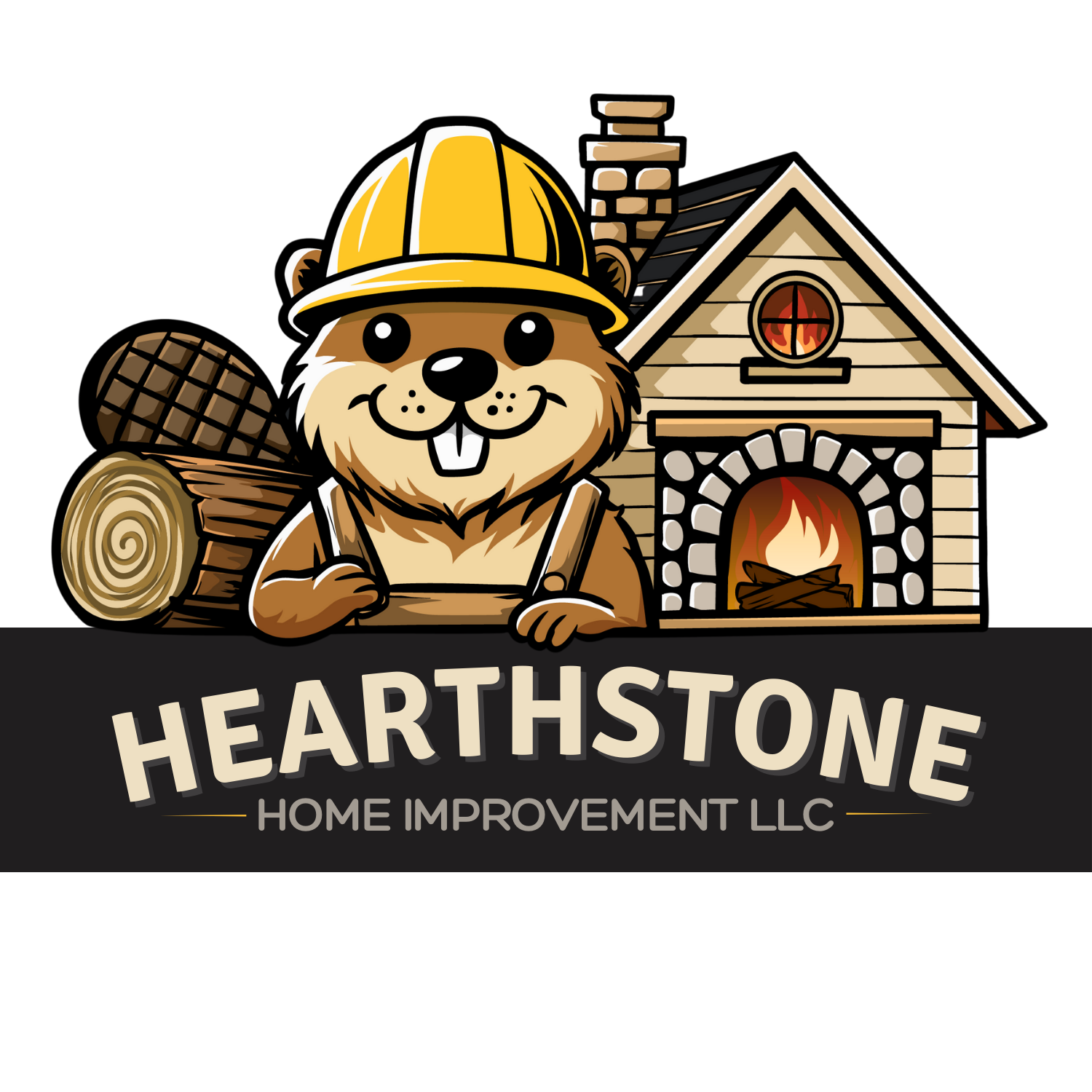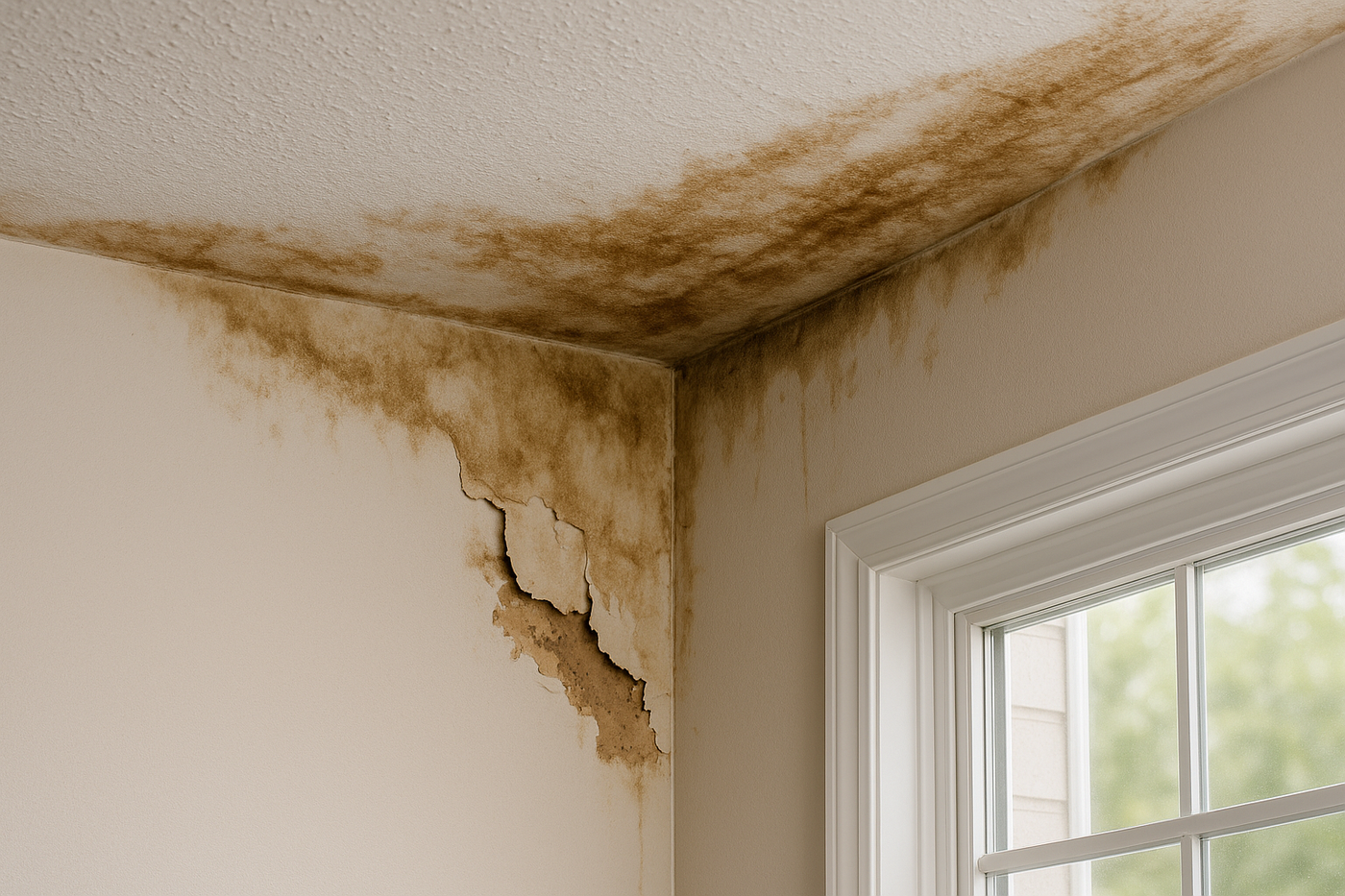A roof leak is never something homeowners can afford to ignore. Even a small drip can signal larger issues hiding behind walls, ceilings, and insulation. While visible water spots might seem like the most obvious sign of a roof leak, the more dangerous problems are the ones you cannot see right away. Many homeowners ask, how can I tell if my roof leak is causing hidden interior damage? Understanding the early indicators can help you act quickly before costly repairs escalate.
Why hidden interior damage from a roof leak is serious
A roof leak is more than just a nuisance. Water that enters your home often travels beyond the initial entry point. It can soak into drywall, insulation, wooden framing, and even electrical systems. Over time, this creates structural weakening, mold growth, and expensive restoration bills. The longer water remains unnoticed, the more severe the interior damage becomes. Knowing how to spot subtle signs of a roof leak will help protect your investment and keep your home safe.
Visible signs that hint at hidden problems
Sometimes, you can spot early warning signs inside your home that suggest a roof leak is spreading damage beyond what you see.
Ceiling stains: Brown or yellow water stains on ceilings may indicate water has pooled and seeped through insulation or drywall.
Wall bubbling or peeling paint: Moisture trapped behind walls often causes bubbling, peeling, or cracking in paint or wallpaper.
Warped trim or baseboards: Wood expands when it absorbs water, which can push trim or baseboards away from walls.
Musty odors: A persistent musty smell can be a red flag for hidden mold growth caused by roof leak moisture.
Each of these signs points to potential hidden interior damage that often goes far beyond surface appearance.
How water from a roof leak spreads unnoticed
Homeowners frequently ask, how can I tell if my roof leak is causing hidden interior damage when there are no obvious stains? Water often takes indirect paths, flowing along rafters, wires, and pipes before settling in areas far from the leak source. For example, water entering through shingles may travel across an attic and drip onto insulation or framing before reaching visible areas. This slow migration allows significant damage to accumulate in silence.
The role of insulation in hiding roof leak damage
Insulation is one of the first areas to be affected by a roof leak. When wet, insulation loses its effectiveness, raising heating and cooling costs. Worse, wet insulation often hides in attics and wall cavities where homeowners rarely check. This makes it easy for roof leak damage to remain hidden for months until energy bills rise or mold develops.
Secondary risks beyond structure
Hidden interior damage from a roof leak is not limited to wood or insulation. Water intrusion can:
Compromise electrical wiring and increase fire risk.
Damage HVAC ducts and reduce indoor air quality.
Spread mold spores throughout living spaces, creating health concerns.
These dangers highlight why asking how can I tell if my roof leak is causing hidden interior damage is so important.
Professional inspection for roof leak detection
While homeowners can look for basic signs, a professional roof inspection provides the most reliable way to uncover hidden damage. Roofing contractors use tools such as moisture meters, infrared cameras, and attic inspections to trace water pathways. A detailed inspection after heavy storms or seasonal changes can reveal damage early and reduce repair costs.
When to schedule an inspection
Homeowners should consider scheduling a roof inspection if they notice any of the following:
Recent severe weather with heavy rain or hail.
Higher utility bills with no clear explanation.
Musty odors in upper levels of the home.
Visible exterior roof wear such as missing shingles.
Waiting too long can allow water to keep spreading inside walls and ceilings.
Preventing hidden interior damage from roof leaks
The best way to minimize hidden roof leak damage is prevention. Regular roof maintenance, prompt repair of missing or damaged shingles, and proper attic ventilation all reduce the risk of leaks spreading. Keeping gutters clear also prevents water from pooling and finding its way under shingles.
Why fast action matters
Homeowners who ask how can I tell if my roof leak is causing hidden interior damage should remember that time is critical. Addressing leaks quickly can mean the difference between a small patch job and thousands of dollars in mold remediation and structural repairs. Acting fast protects both your home’s safety and its long-term value.
Final thoughts
A roof leak can be deceptive. Even when the signs are not obvious, hidden interior damage may already be underway. By paying attention to ceiling stains, wall bubbling, odors, or rising energy bills, you can catch early warnings. Combining regular professional roof inspections with preventive maintenance is the best strategy to keep your home protected. If you are concerned about roof leaks or suspect hidden damage, schedule a professional inspection right away.

